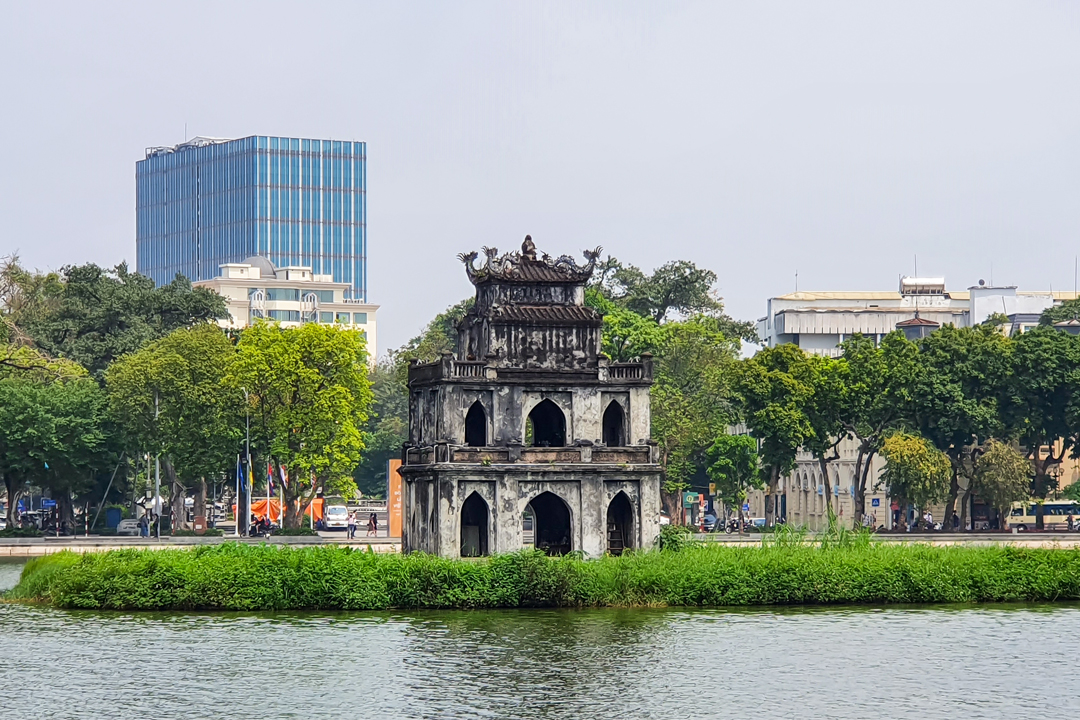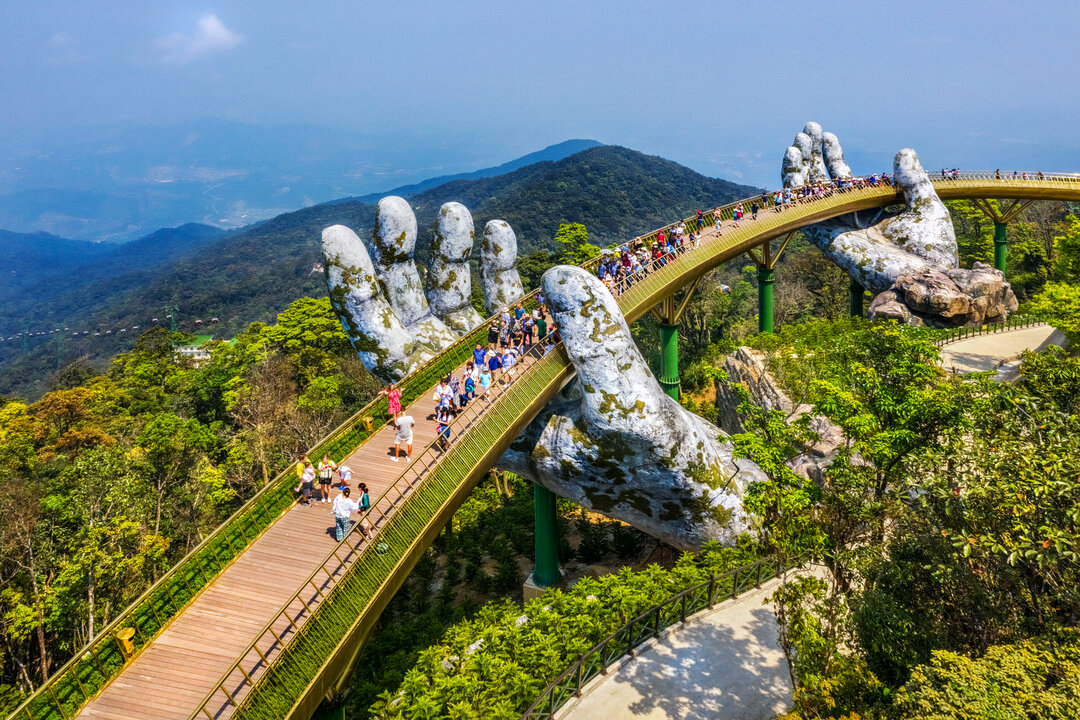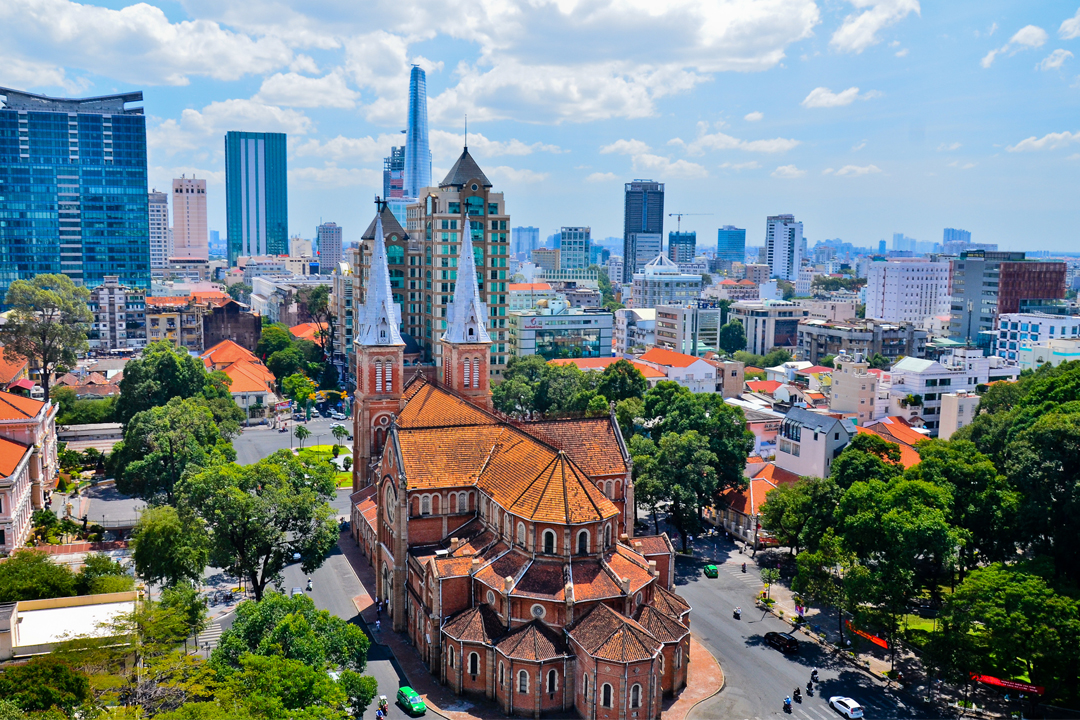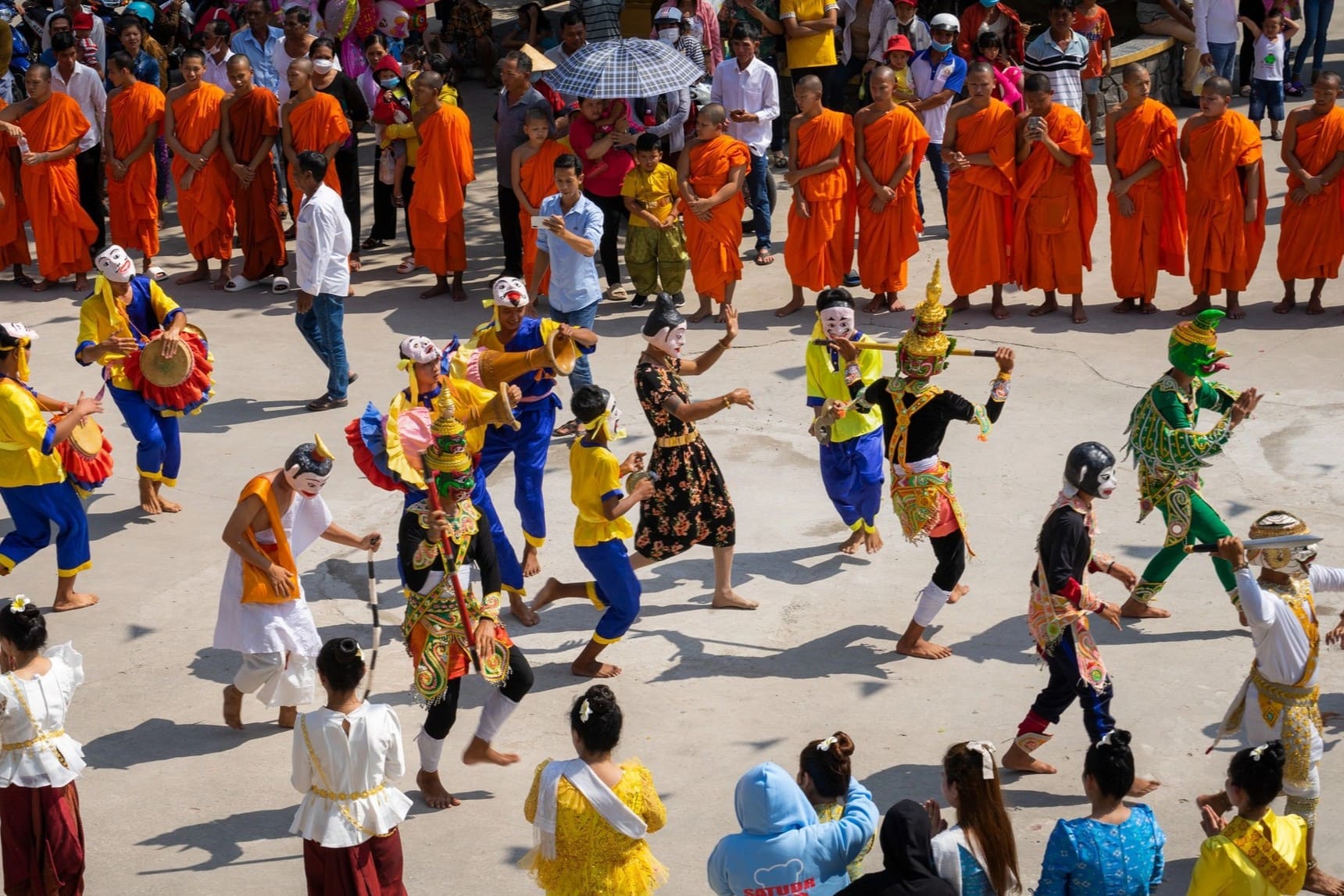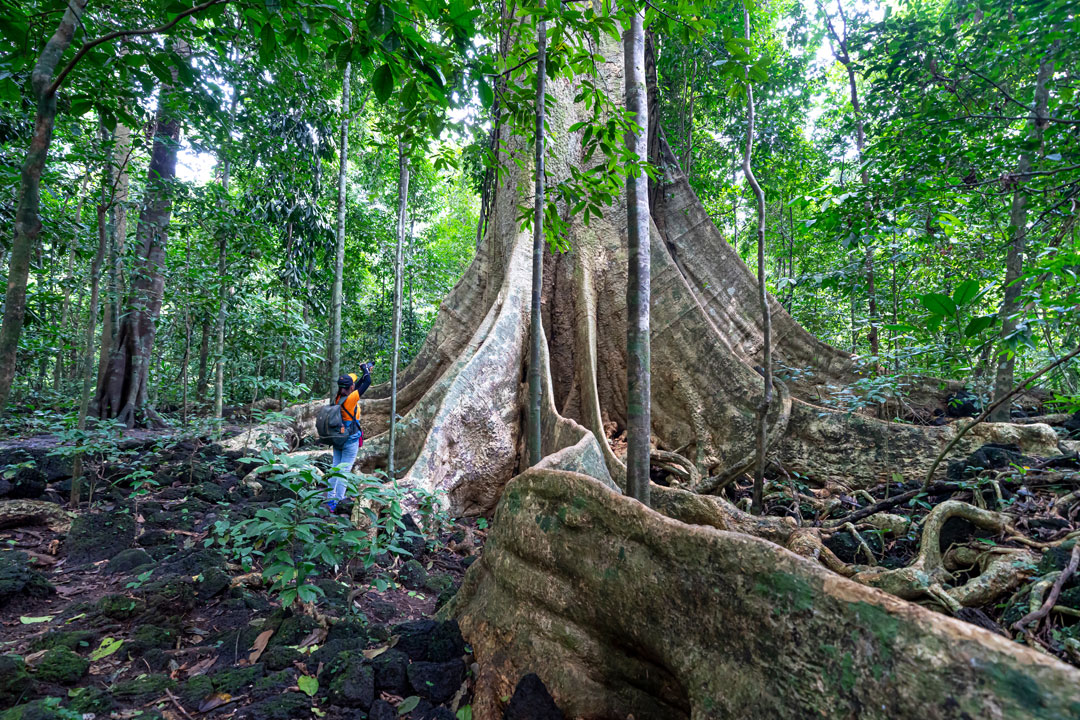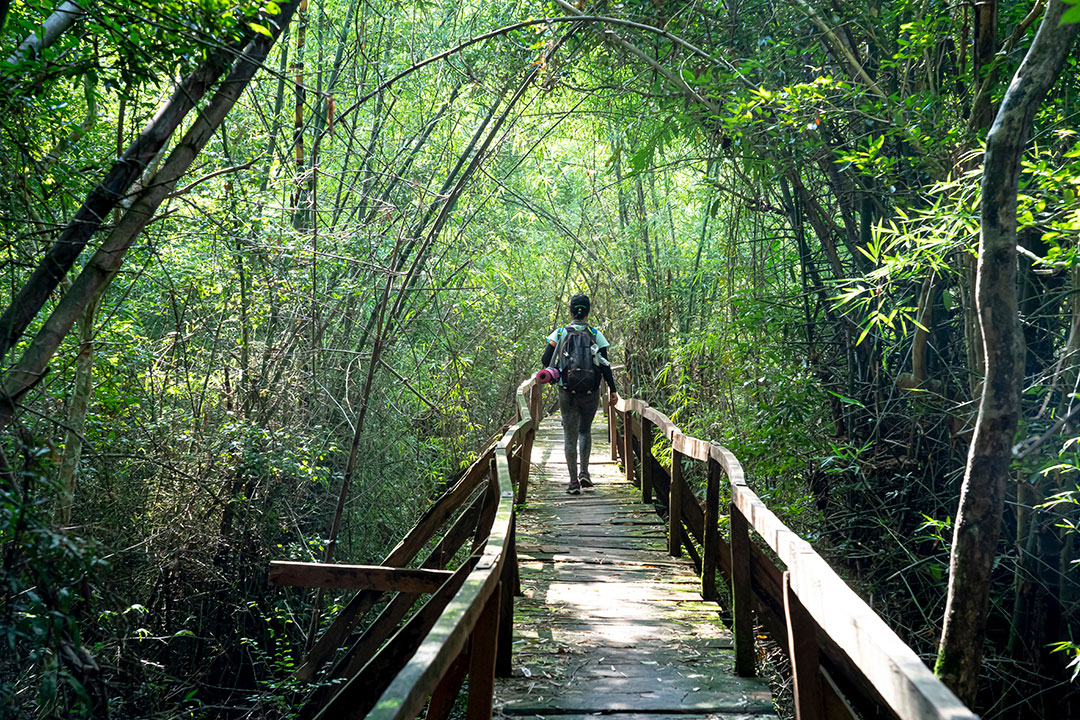Cat Tien National Park: Biodiversity, Things to Do, Entrance Fees & Travel Guide
Spanning over 71,920 hectares of lush landscapes, Cat Tien National Park stands as one of Vietnam’s most captivating natural reserves. Recognized as the world’s 411th biosphere reserve by UNESCO, this park offers a unique opportunity to explore the vibrant Vietnam rainforest ecosystem while discovering rare species. Within its expansive grounds, five distinct forest types showcase the region’s ecological diversity, from evergreen broad-leaved forests to bamboo groves and seasonal wetlands.
This article of GTrip provides a detailed Cat Tien National Park travel guide covering essential aspects of your visit. Discover the park’s vital role in endangered species protection along with reptiles like the Python reticulatus and Crocodylus siamensis. The area also shelters mammals like the Bos gaurus and Panthera tigris, making it a hotspot for wildlife conservation.
Timing your visit is crucial for maximizing your experience. You can learn about the best time to visit Cat Tien National Park, where the dry season provides ideal conditions for wildlife watching and trekking. Accessibility is also straightforward, with multiple transportation options available from Ho Chi Minh City and surrounding regions. Upon arrival, you should be aware of the Cat Tien National Park entrance fee, as well as park regulations designed to protect both wildlife and ecosystems.
Throughout this article, you’ll also find practical advice, including Cat Tien National Park visitor tips for trekking and wildlife observation. There are also answers to common traveler inquiries. Each section provides comprehensive insights to ensure your adventure is both memorable and environmentally responsible.
Overview of Cat Tien National Park
Cat Tien National Park showcases a vibrant Vietnam rainforest ecosystem with dense foliage, wetlands, and grasslands supporting a wide range of species. Covering 71,920 hectares, the park spans three regions: 39,627 hectares in Nam Cat Tien (Dong Nai Province), 27,850 hectares in Cat Loc (Lam Dong Province), and 4,431 hectares in Tay Cat Tien (Binh Phuoc Province). This extensive area offers habitats crucial for endangered species such as the Asian elephant, gaur, and several primates. The park also attracts wildlife enthusiasts, particularly those interested in birdwatching in Cat Tien Park, as it shelters hundreds of bird species among its canopies.
The park’s landscape is shaped by five distinct forest types, each supporting different flora and fauna:
- Evergreen broadleaf forest: Dominated by towering trees that retain foliage year-round, creating dense canopies for primates and birds.
- Semi-evergreen forest with deciduous trees: Featuring mixed vegetation that changes with the seasons, this area is ideal for spotting mammals such as deer and wild boars.
- Mixed forest with bamboo: Providing shelter for endangered animals like the Asian elephant and gaur, this forest also supports reptiles and amphibians.
- Pure bamboo forest: Known for its dense bamboo growth, home to smaller mammals and a variety of bird species.
- Flooded plantation bench: Seasonal flooding sustains aquatic plants, attracting wetland birds and amphibians.
People exploring the park will encounter a rich tapestry of life, from vibrant butterflies and reptiles to elusive mammals hidden within the dense foliage. The park’s commitment to protecting its ecosystems ensures that endangered species in Cat Tien National Park flora and fauna continue to thrive in their natural environment.
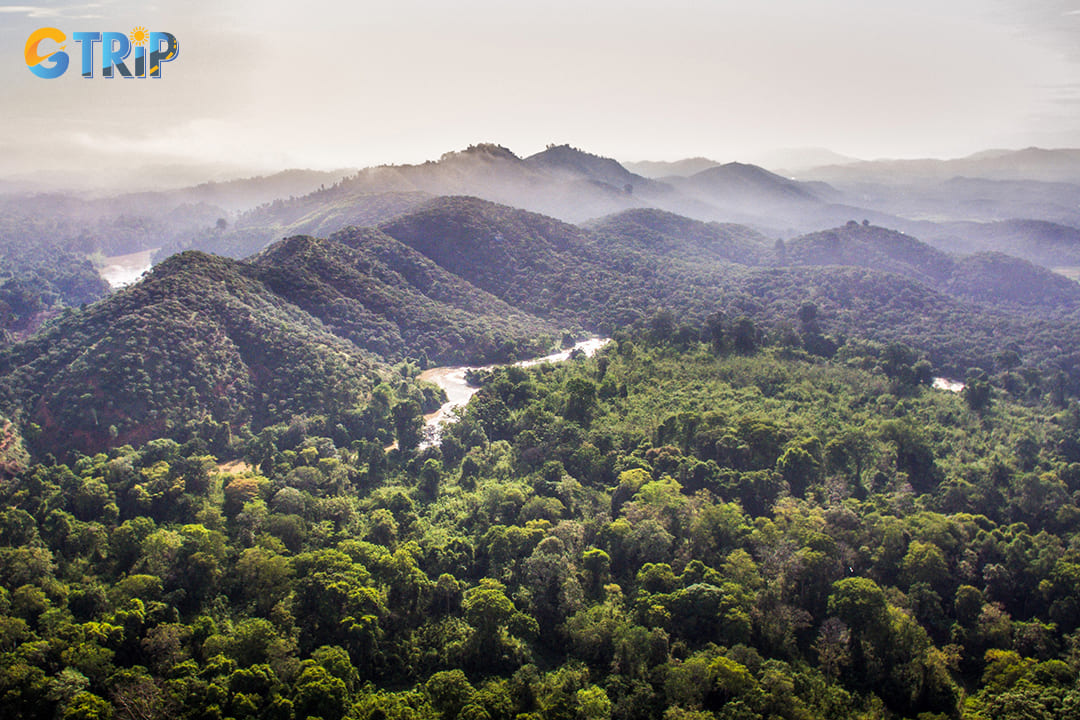
Cat Tien National Park showcases a vibrant Vietnam rainforest ecosystem with dense foliage, wetlands, and grasslands
Biodiversity and environmental conservation
Cat Tien National Park's rich biodiversity spans tropical rainforests, wetlands, and rivers, creating a crucial habitat for countless species. Its conservation initiatives focus on protecting endangered wildlife while promoting ecological sustainability.
Endangered species and biodiversity
Cat Tien National Park plays a vital role in endangered species protection and wetland ecosystem preservation, supporting diverse wildlife across its tropical rainforest and wetlands. As part of its conservation efforts, the park safeguards rare mammals, reptiles, birds, and aquatic species, many of which are listed in both the Vietnamese and IUCN Red Books.
The park is a sanctuary for endangered mammals, with 103 species across 29 families and 11 orders. Notable species include the majestic Bos javanicus (banteng), Bos gaurus (gaur), and Elephas maximus (Asian elephant), which roam freely within designated habitats. Predators like Panthera tigris (Indochinese tiger), Ursus malayanus (sun bear), and Ursus thibetanus (Asiatic black bear) highlight the park’s ecological richness.
Bird enthusiasts can observe 348 bird species from 64 families and 18 orders, with 31 species recognized as rare or endangered. Iconic species include Ciconia episcopus (woolly-necked stork), Pavo muticus imperator (green peafowl), Pseudibis davisoni (white-shouldered ibis), Leptoptilos javanicus (lesser adjutant), and Cairina sctulata (white-winged duck). The park’s diverse avian population makes it a prime location for birdwatching in Cat Tien Park, especially in wetland and forested areas.
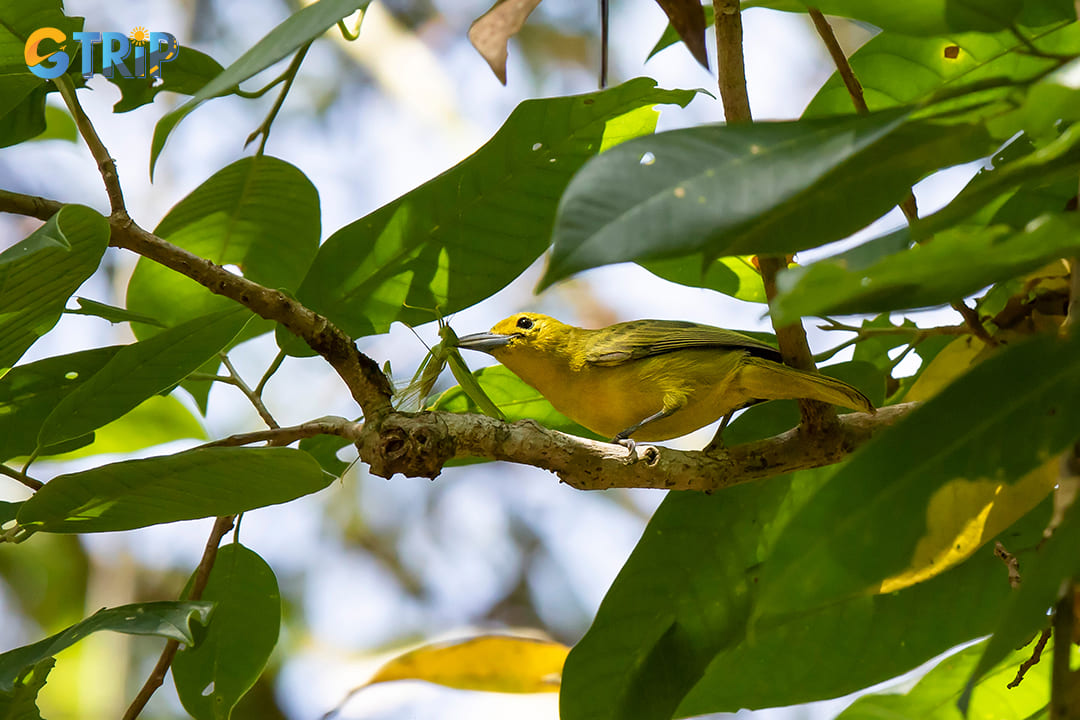
Bird enthusiasts can observe 348 bird species from 64 families and 18 orders
Reptiles also thrive within the park’s ecosystem, with 79 species from 17 families. Among these, 23 species are protected due to their endangered status, such as Crocodylus siamensis (Siamese crocodile), Python reticulatus (reticulated python), and Python molurus (Indian python). These reptiles are vital to the park’s ecological balance, contributing to predator-prey dynamics in both terrestrial and aquatic environments.
The aquatic ecosystem is home to 133 fish species from 28 families. One notable species listed in the IUCN Red Book is the Mon fish (or Dragon fish), while eight species, including Lang bo, Co chai, Co king nha, and Co loc bong, are documented in the Vietnamese Red Book. These fish populations are essential for maintaining the park’s freshwater biodiversity.
Insect diversity is equally remarkable, with 751 species recorded, including 457 butterfly species that contribute to pollination and ecosystem health. The vibrant butterfly population attracts nature enthusiasts, adding to the park’s ecological significance.
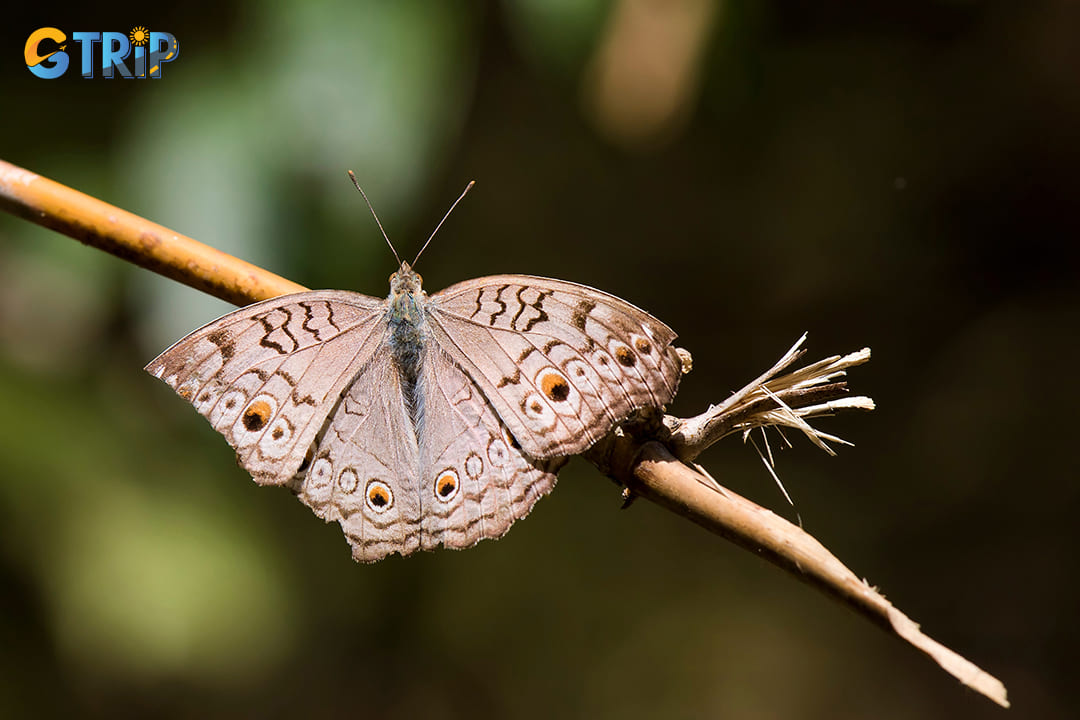
The vibrant butterfly population attracts nature enthusiasts
Conservation programs and habitat restoration
Conservation programs such as the Primates conservation project and wetland restoration initiatives aim to protect vulnerable habitats from human encroachment and climate change. Strict regulations are enforced to prevent illegal hunting, logging, and habitat destruction, ensuring long-term biodiversity preservation.
Sustainable tourism practices also play a key role in supporting conservation. Revenue from entrance fees and guided tours contributes directly to habitat protection and wildlife monitoring. Everybody is encouraged to respect park guidelines, minimize their environmental impact, and support eco-friendly activities to help maintain the park’s delicate ecosystem.
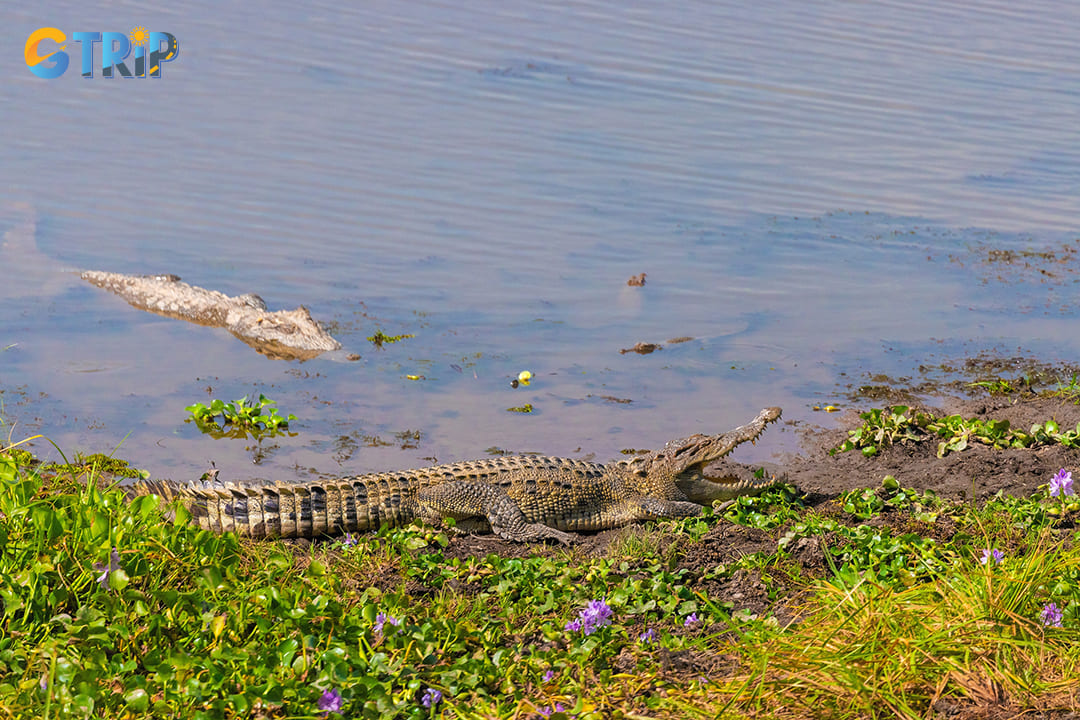
Sustainable tourism practices play a key role in supporting conservation
Top 4 things to do in Cat Tien National Park
The park’s diverse landscapes, from dense forests to wetland ecosystems, offer endless opportunities for outdoor adventures.
1. Birdwatching in Cat Tien National Park
Cat Tien National Park is a paradise for birdwatchers, boasting over 350 bird species within its diverse habitats. From dense tropical rainforests to open wetlands, the park offers numerous opportunities to observe both resident and migratory birds. Early mornings and late afternoons are the best times for birdwatching, as the forest comes alive with the songs and calls of various species. Guided birdwatching tours, led by experienced local guides, help tourists spot rare and elusive birds while providing insights into their behavior and habitats.
Among the park’s avian residents, Germain’s peacock-pheasant and bar-bellied pitta are particularly sought after for their striking plumage. Birdwatchers may also encounter the endangered orange-necked partridge, which is native to the region. Wetland areas such as Crocodile Lake attract waterfowl, including the lesser adjutant stork, purple heron, and white-bellied sea eagle. In the forest canopy, colorful species like the black-and-red broadbill and great hornbill can be observed gliding between trees. The park’s diverse flora also attracts nectar-feeding birds such as sunbirds and flowerpeckers.
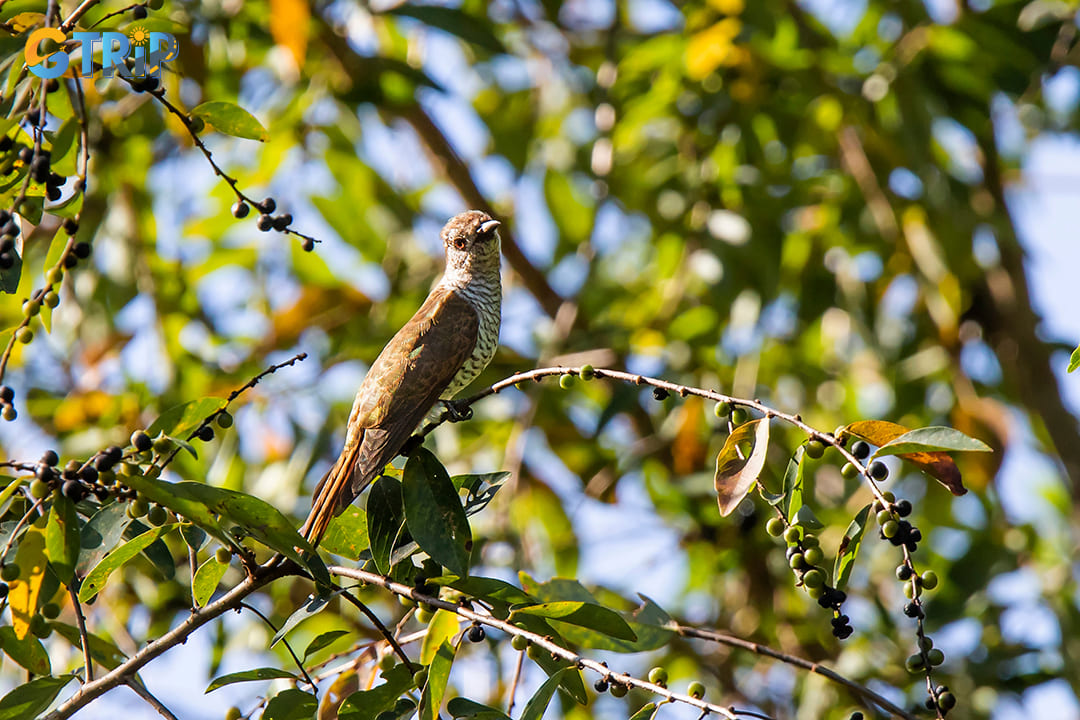
Cat Tien National Park is a paradise for birdwatchers, boasting over 350 bird species within its diverse habitats
Dedicated birdwatching trails, such as those near Crocodile Lake and the botanical garden, offer ideal vantage points with minimal disturbance to wildlife. Bird hides and observation platforms allow people to observe birds up close without disrupting their natural behavior. For photographers, the soft morning light filtering through the trees provides perfect conditions for capturing detailed images of birds in their natural habitat.
2. Cycling through forest trails
Exploring Cat Tien National Park by bicycle offers a unique and exhilarating way to experience its natural beauty. The park’s network of well-maintained trails winds through dense forests, open grasslands, and along scenic riverbanks, allowing cyclists to immerse themselves in the sights and sounds of the tropical rainforest. Cycling is not only an eco-friendly mode of transportation but also provides greater flexibility to explore the park’s diverse landscapes at a leisurely pace.
One of the most popular cycling routes leads from the park’s main entrance to Crocodile Lake, covering approximately 9 kilometers of scenic terrain. As cyclists pedal along shaded trails, they may encounter wildlife such as deer, macaques, and colorful butterflies. The gentle terrain makes this route suitable for both beginners and experienced cyclists, while occasional uphill sections add a touch of challenge. Another notable route is the path to the botanical garden, where cyclists can admire a wide variety of native plants and trees.
Cycling tours led by knowledgeable guides offer additional insights into the park’s ecosystems, history, and conservation efforts. For those who prefer independent exploration, bicycles can be rented from the park’s visitor center. Safety is a priority, with clear signage and designated cycling paths ensuring a secure and enjoyable ride. Exploring Cat Tien National Park on two wheels is a refreshing way to connect with nature while covering more ground than on foot.
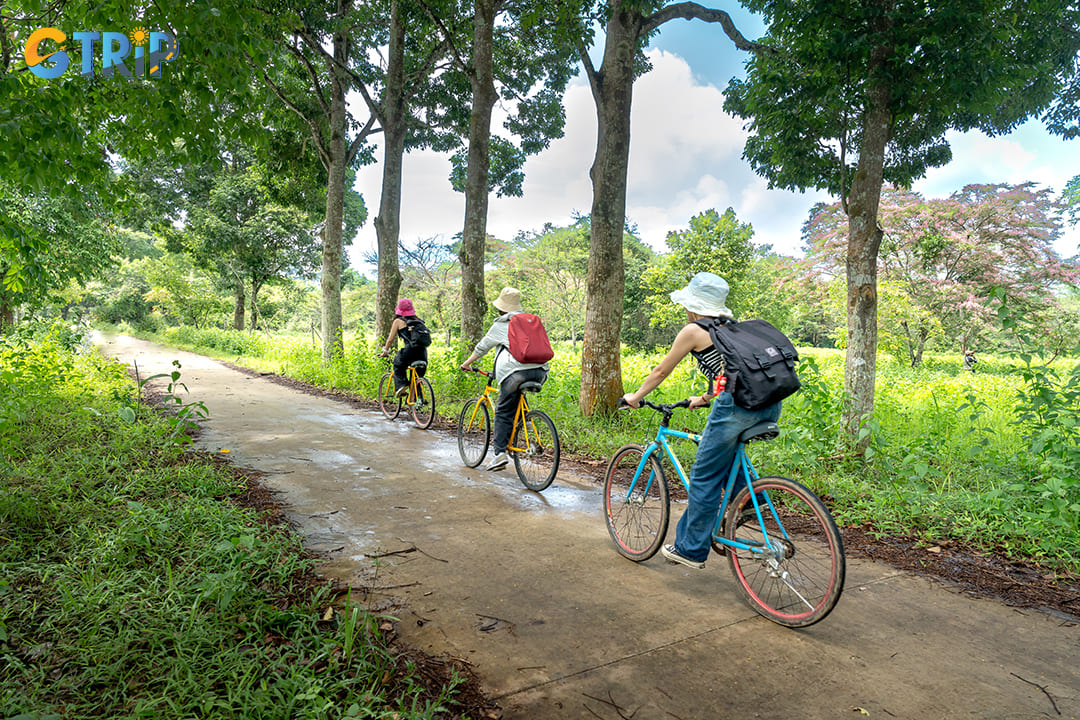
Exploring Cat Tien National Park by bicycle offers a unique and exhilarating way to experience its natural beauty
3. Wildlife spotting during night safaris
A night safari in Cat Tien National Park offers a thrilling opportunity to witness the forest’s nocturnal wildlife in its natural habitat. As darkness falls, the rainforest transforms into a world of mysterious sounds and elusive creatures. Guided night safaris, conducted in open-top vehicles, take tourists deep into the forest, where powerful spotlights are used to illuminate animals as they emerge under the cover of night. The experience is both exciting and educational, providing a rare glimpse into the park’s nighttime ecosystem.
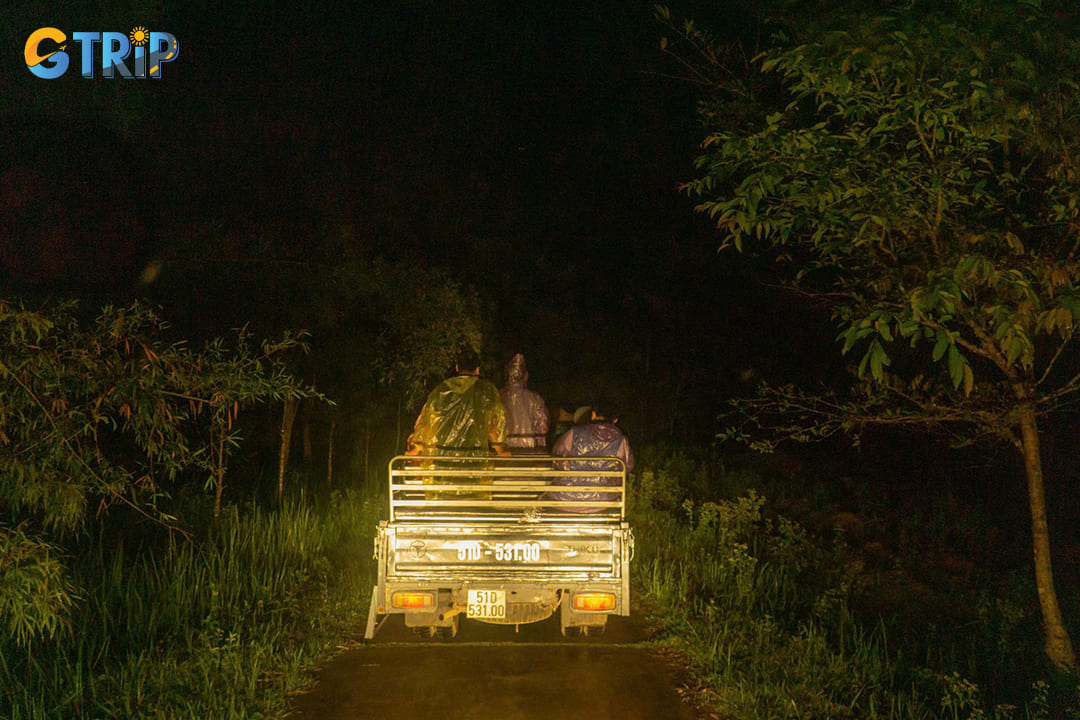
A night safari in Cat Tien National Park offers a thrilling opportunity to witness the forest’s nocturnal wildlife in its natural habitat
Common sightings during night safaris include sambar deer grazing in open clearings, porcupines foraging along the forest floor, and civets moving stealthily through the trees. Lucky people may spot the elusive leopard cat, known for its striking spotted coat and agile movements. The forest canopy often reveals flying squirrels gliding from tree to tree, while the sounds of distant owl calls add to the safari’s immersive atmosphere. Guides with expert knowledge of the park’s wildlife help identify animals and share fascinating facts about their behavior and conservation status.
To ensure minimal disturbance to wildlife, strict guidelines are followed regarding vehicle noise and light usage. Everyone is encouraged to remain quiet and attentive, maximizing their chances of spotting rare species. Photography is allowed, but the use of flash is prohibited to avoid startling the animals. Night safaris typically last one to two hours, offering ample time to explore different areas of the park.
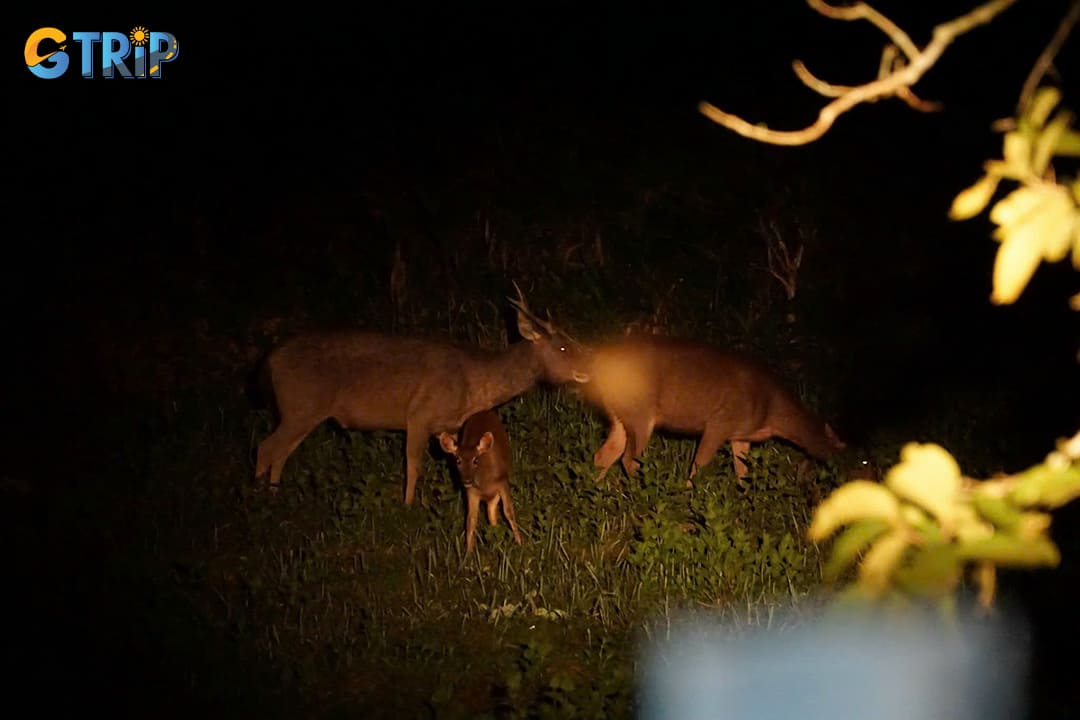
Common sightings during night safaris include sambar deer grazing in open clearings
4. Photographing flora and fauna
Cat Tien National Park is a haven for photography enthusiasts, offering stunning opportunities to capture the rich biodiversity of Vietnam’s tropical rainforest. From vibrant bird species and elusive mammals to exotic plants and scenic landscapes, the park’s diverse environments provide endless inspiration for photographers. The best times for photography are early mornings and late afternoons when soft, natural light enhances the colors and textures of the forest.
Wildlife photography is particularly rewarding in areas such as Crocodile Lake and the botanical garden, where birds, butterflies, and mammals are commonly observed. Birdwatchers with telephoto lenses can capture striking images of species like the black-and-red broadbill and Germain’s peacock-pheasant. Macro photographers can focus on the intricate details of insects and flowers. The park’s dense vegetation and dappled sunlight create dramatic contrasts, adding depth and atmosphere to wildlife portraits. Mammals such as gaur, langurs, and civets may also be spotted during guided tours, providing opportunities for dynamic action shots. Night safaris offer a chance to photograph nocturnal creatures, such as deer and small carnivores, under the glow of artificial light.

Night safaris offer a chance to photograph nocturnal creatures
Flora photography is equally captivating, with towering trees, vibrant orchids, and unique ferns creating a lush backdrop for creative compositions. Close-up shots reveal the delicate patterns of leaves and petals, while wide-angle lenses capture the grandeur of the rainforest canopy. One of the most iconic subjects in Cat Tien National Park is the Giant Tung Tree (Tetrameles nudiflora). This ancient tree, believed to be over 400 years old, stands as a towering testament to the park’s rich ecological history. With a massive trunk that requires several people to encircle it, the Giant Tung Tree is a favorite subject for nature photographers. Capturing this tree from different angles - using low perspectives to highlight its height or close-ups to emphasize the intricate texture of its bark - adds depth and drama to photographs.
Other remarkable trees, such as Lagerstroemia tomentosa (Bang Lang Tree) and various dipterocarps, contribute to the park’s majestic scenery. In the wet season, the forest floor comes alive with vibrant mushrooms and fungi, offering unique macro photography opportunities. The dense rainforest, with its intertwining vines and towering canopy, provides a dramatic setting for landscape photography, making every shot a work of art.
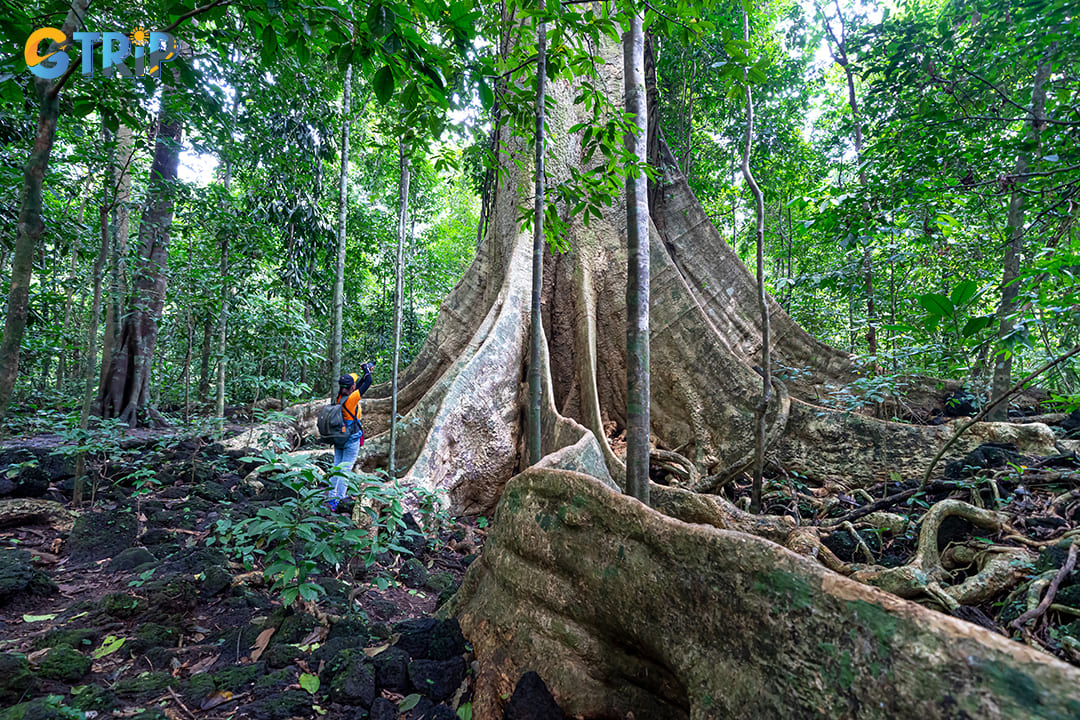
One of the most iconic subjects in Cat Tien National Park is the Giant Tung Tree
To make the most of a photography trip, photographers should be well-prepared for the humid environment. The golden hours of early morning and late afternoon provide the best lighting conditions, casting a warm glow over the lush greenery. Protective gear, such as waterproof camera bags and silica gel packs, helps safeguard equipment from moisture. Tripods are essential for low-light conditions, especially when photographing wildlife at dawn or dusk. Telephoto lenses are recommended for bird and mammal photography, while wide-angle lenses are best for capturing landscapes and large trees.
Respecting nature is essential when photographing in the park. Photographers should stay on designated trails, avoid using flash near animals, and refrain from disturbing wildlife for the sake of a shot. Guided photography tours are available for those seeking expert tips and assistance in locating prime photo opportunities.
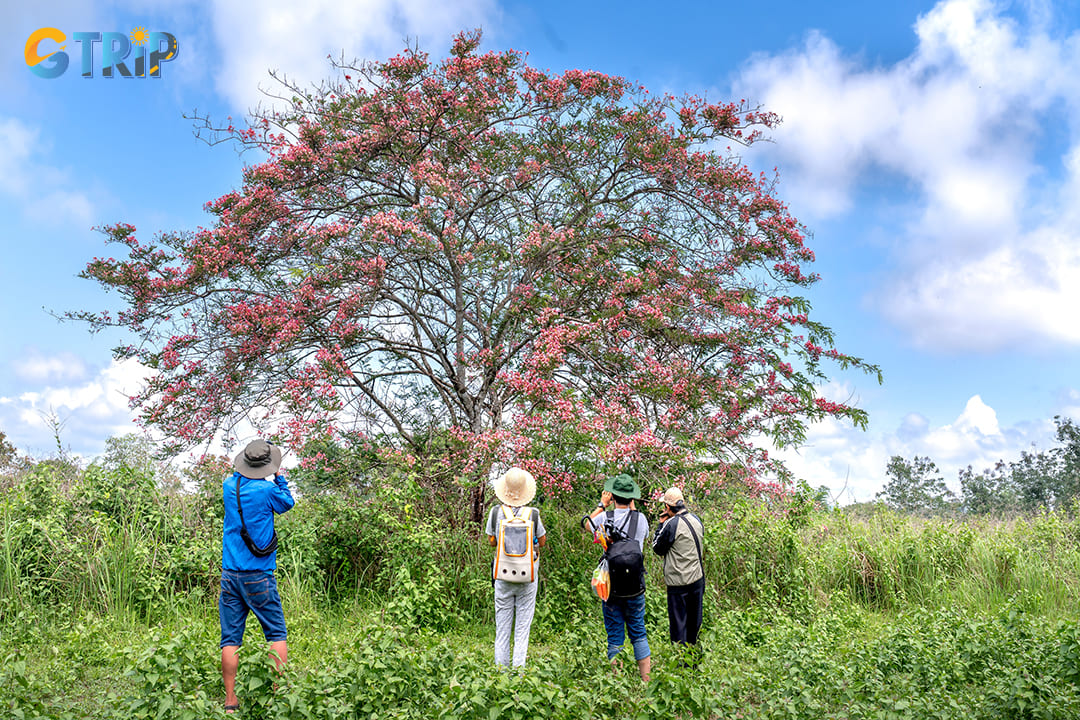
Respecting nature is essential when photographing in the park
The best time to visit Cat Tien National Park
The best time to visit Cat Tien Park depends on seasonal weather patterns, influencing both wildlife behavior and outdoor activities. The park experiences two distinct seasons: the dry season from December to April and the rainy season from May to November. Each offers unique experiences, but the dry season stands out for better wildlife observation and trekking opportunities.
During the dry season, Cat Tien National Park weather is characterized by clear skies, mild temperatures, and reduced humidity. This period allows tourists to explore the park’s dense forests and wetland ecosystems without the challenge of muddy trails. Early mornings and late afternoons are prime times for spotting endangered species like the gaur, Asian elephants, and various primates, as they are more active during cooler parts of the day. Birdwatchers also benefit from this season, with increased visibility of migratory species and vibrant butterfly populations.
Conversely, the rainy season transforms the park into a lush, green rainforest. While trekking might be more challenging due to slippery trails, the landscape becomes more vibrant, attracting amphibians, reptiles, and insects. Wildlife sightings, however, can be less frequent as animals tend to stay deeper within the forest.
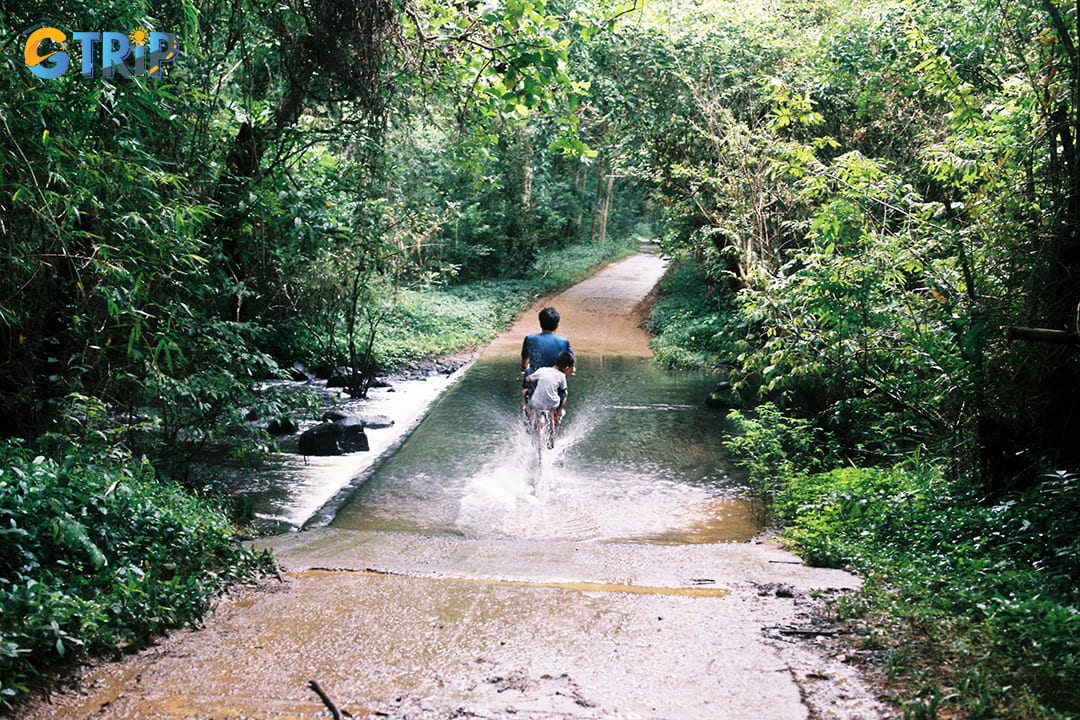
The rainy season transforms the park into a lush, green rainforest
Entrance fees and regulations
Cat Tien National Park entrance fee varies depending on visitor categories and selected activities. For international travelers, the standard entrance fee is approximately 60,000 VND per person, while Vietnamese adults pay around 40,000 VND. Children under 15 years old benefit from discounted rates. Fees for specific activities, such as guided night safaris or Crocodile Lake trekking, are charged separately to support conservation projects. Tourists planning overnight stays must register in advance and follow camping guidelines to preserve the park’s delicate ecosystem. There are also specific fees for each experience in the park such as entrance to Bau Sau, jeep, bike or car rental, entrance to Dao Tien, and other services.
Park regulations are designed to ensure both tourist safety and wildlife protection. Activities like feeding or disturbing animals are strictly prohibited. You should remain on designated trekking trails to avoid damaging native flora and disturbing wildlife habitats. Littering is strictly forbidden, and waste disposal facilities are available at designated areas throughout the park. Additionally, the park enforces a no-smoking policy within forested areas to prevent the risk of wildfires.

Park regulations are designed to ensure both tourist safety and wildlife protection
Permitted activities include hiking, wildlife observation, birdwatching, and visiting cultural sites such as Ta Lai ethnic minority village. Night safaris, which offer glimpses of nocturnal animals, require booking through the visitor center. For a more immersive experience, trekking trails like the one leading to Crocodile Lake allow close encounters with rare species in their natural environment.
To maintain the integrity of its rainforest ecosystem, Cat Tien National Park usually limits tourist capacity during peak seasons, especially from December to April. Therefore, booking tickets and accommodations in advance is highly recommended. Following these regulations ensures a safe experience while supporting the park’s conservation initiatives.
How to get to Cat Tien National Park?
Cat Tien National Park is located in Dong Nai Province, about 150 km northeast of Ho Chi Minh City, offering multiple transportation options. The journey typically takes 3.5 to 4 hours, depending on traffic and the chosen mode of transport. Below is a comprehensive guide to reaching this renowned part of the Dong Nai Biosphere Reserve:
1. By private car or motorbike
Traveling by private car or motorbike provides flexibility and the opportunity to enjoy scenic landscapes along the way. From Ho Chi Minh City, take National Highway 1A toward Dong Nai Province, then turn onto National Highway 20 at Dau Giay Intersection. Continue until you reach Ta Lai Junction in Tan Phu District, where you’ll follow signs leading to the park entrance. The entire journey covers approximately 150 km and takes about 3.5 hours by car or 4 hours by motorbike.
- Car rental: Renting a car with a driver is common among tourists, ensuring a comfortable and stress-free journey. Many rental services in Ho Chi Minh City offer round-trip packages that include pick-up and drop-off at your hotel.
- Motorbike rental: For more adventurous travelers, renting a motorbike is a popular choice. Be mindful that the roads, especially Provincial Road 761, can be uneven in certain sections, particularly during the rainy season. Parking is available at the Cat Tien visitor information center near the park entrance.
2. By bus from Ho Chi Minh City
Public buses provide a budget-friendly option to reach Cat Tien National Park. Depart from Mien Dong Bus Station (Ben Xe Mien Dong) in Ho Chi Minh City and take a bus to Tan Phu Town in Dong Nai Province. Several reputable bus companies operate on this route, including:
- Thanh Buoi Bus Company: Known for its comfortable seats and reliable service.
- Phuong Trang (FUTA Bus Lines): Offers regular departures with modern buses equipped with air conditioning.
The bus journey takes approximately 3.5 to 4 hours, depending on traffic conditions. Upon arrival in Tan Phu Town, travelers can hire a taxi or motorbike taxi (xe om) for the final 10 km to the park entrance. The cost of this short ride typically ranges from 100,000 to 150,000 VND.
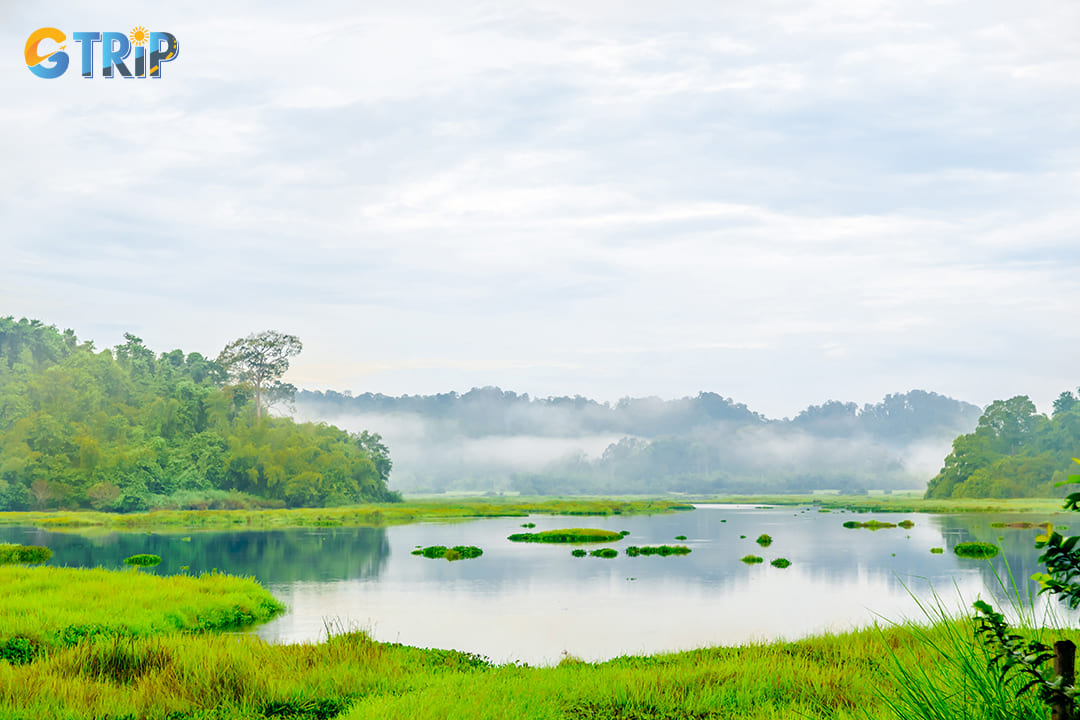
Cat Tien National Park is located in Dong Nai Province, about 150 km northeast of Ho Chi Minh City
3. Combine train and taxi
Although there is no direct train service to Cat Tien National Park, travelers can combine a train ride with a taxi transfer:
- Take a train from Ho Chi Minh City (Saigon Railway Station) to Bien Hoa Station in Dong Nai Province. The train ride lasts about 1 to 1.5 hours.
- From Bien Hoa Station, hire a taxi for the 130 km journey to the park, which takes approximately 2.5 hours. Taxi services such as Vinasun and Mai Linh are reliable and widely available.
This option is ideal for those seeking a more relaxed travel experience, as the train ride offers scenic views of the Vietnamese countryside before continuing the journey by road.
4. By private transfer or tour package
Many travel agencies and tour operators offer private transfers and guided tours to Cat Tien National Park. These services often include door-to-door transportation from hotels in Ho Chi Minh City, making it a convenient option for both solo travelers and groups. Private transfers typically cost between 1,500,000 to 2,500,000 VND (approximately 60 to 100 USD) for a one-way trip, depending on the vehicle type and group size.
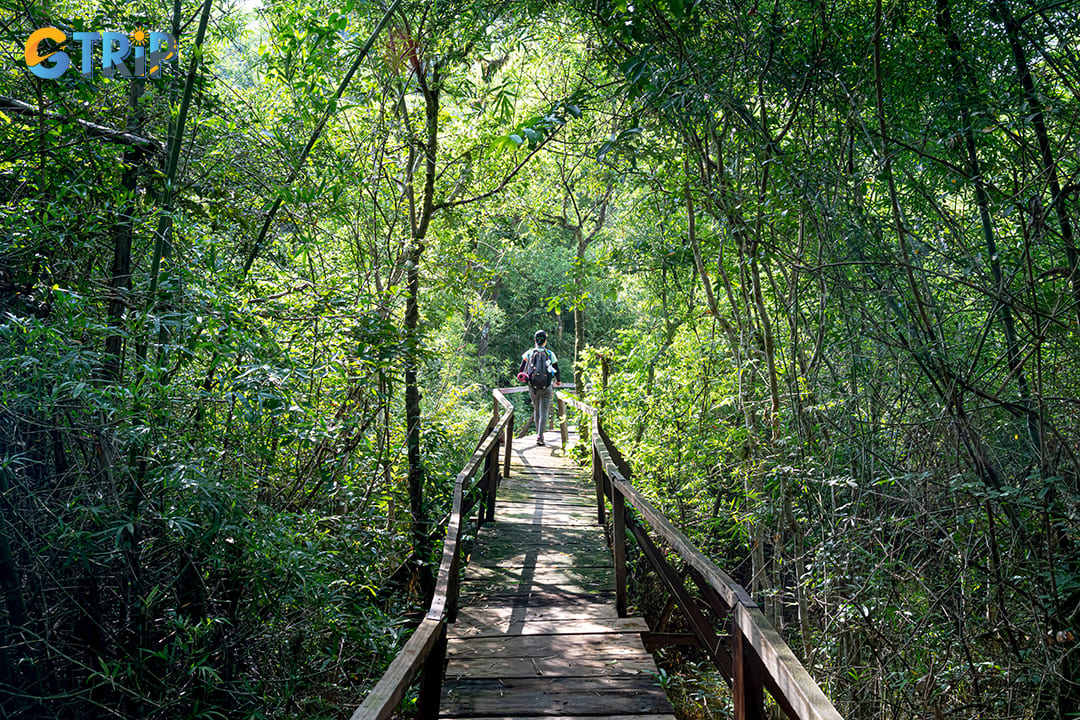
The journey to the park typically takes 3.5 to 4 hours, depending on traffic and the chosen mode of transport
Essential tips for visiting Cat Tien National Park
Cat Tien National Park visitor tips help ensure both a safe experience and minimal impact on the ecosystem:
- Wear lightweight, breathable clothing to stay comfortable in the humid climate.
- Use sturdy hiking boots for stability on uneven Cat Tien National Park trekking trails.
- Apply insect repellent to protect against mosquitoes, especially during early mornings and evenings.
- Bring a wide-brimmed hat and sunscreen to shield yourself from the tropical sun.
- Maintain a safe distance from wildlife to avoid disturbing endangered species.
- Avoid feeding animals and using flash photography, especially during night safaris.
- Stay on designated trails to minimize disruption to natural habitats.
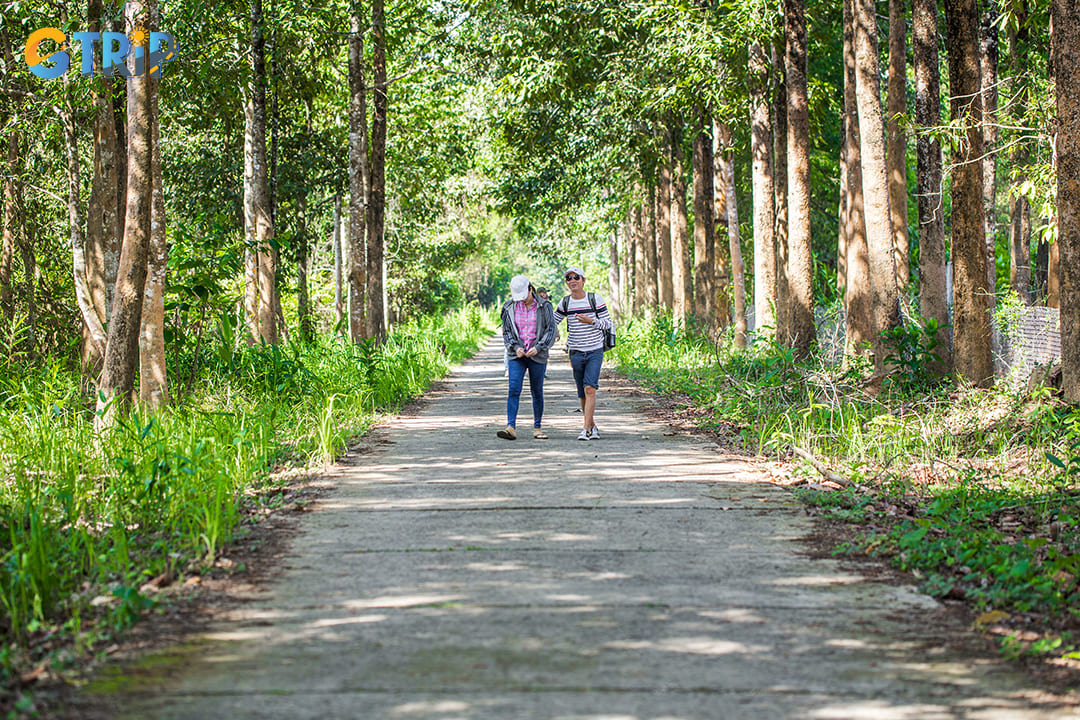
Remember tips to have an enjoyable trip to Cat Phuong Park
- Pack a reusable water bottle, energy snacks, and a flashlight for hiking.
- Carry a basic first-aid kit and a waterproof bag for electronics and documents.
- Keep noise levels low to increase your chances of spotting elusive wildlife.
- Book accommodations in advance since camping is only allowed in designated areas.
- Hire local guides from the visitor center for a more insightful experience.
- Follow park regulations to help protect the rainforest ecosystem and endangered species.
Nearby attractions from Cat Tien National Park
Exploring nearby attractions around Cat Tien National Park enhances your journey with cultural, natural, and spiritual experiences.
Nhu Y Fishing Lake in Nam Cat Tien
Located within the Dong Nai Biosphere Reserve, Nhu Y Fishing Lake is a tranquil retreat for nature lovers and anglers. This freshwater lake, surrounded by dense forest, provides a peaceful setting to observe aquatic life and enjoy leisurely fishing. The lake’s ecosystem supports a variety of fish species, including local favorites like carp and catfish, making it a favorite spot for those seeking a quiet escape.
Besides fishing, you can take in the scenic landscape, which changes dramatically between the wet and dry seasons. During the rainy months, the lake expands, attracting migratory birds and offering stunning reflections of the surrounding rainforest. In the dry season, the exposed banks become a feeding ground for wildlife, adding to the area's ecological significance.
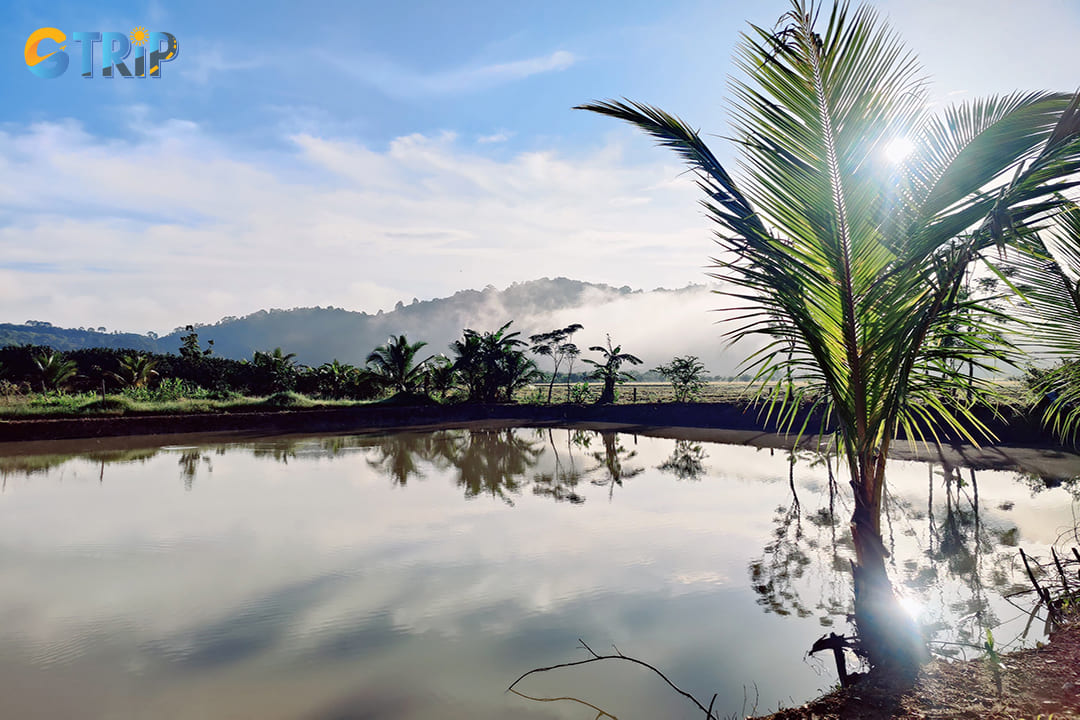
Nhu Y Fishing Lake is a tranquil retreat for nature lovers and anglers
Phap Son Vipassana Centre
Nestled near the park, Phap Son Vipassana Centre is a place of spiritual retreat that blends seamlessly with the Vietnam rainforest ecosystem. Built with traditional Vietnamese architecture, the monastery is surrounded by ancient trees and offers breathtaking views of the lush green hills. You can join meditation sessions led by resident monks or simply walk along the monastery’s peaceful garden paths. The quiet ambiance, punctuated only by the sounds of nature, makes it an ideal location for self-reflection and relaxation. The site also plays a role in environmental conservation, with monks actively promoting sustainable practices and forest protection efforts.
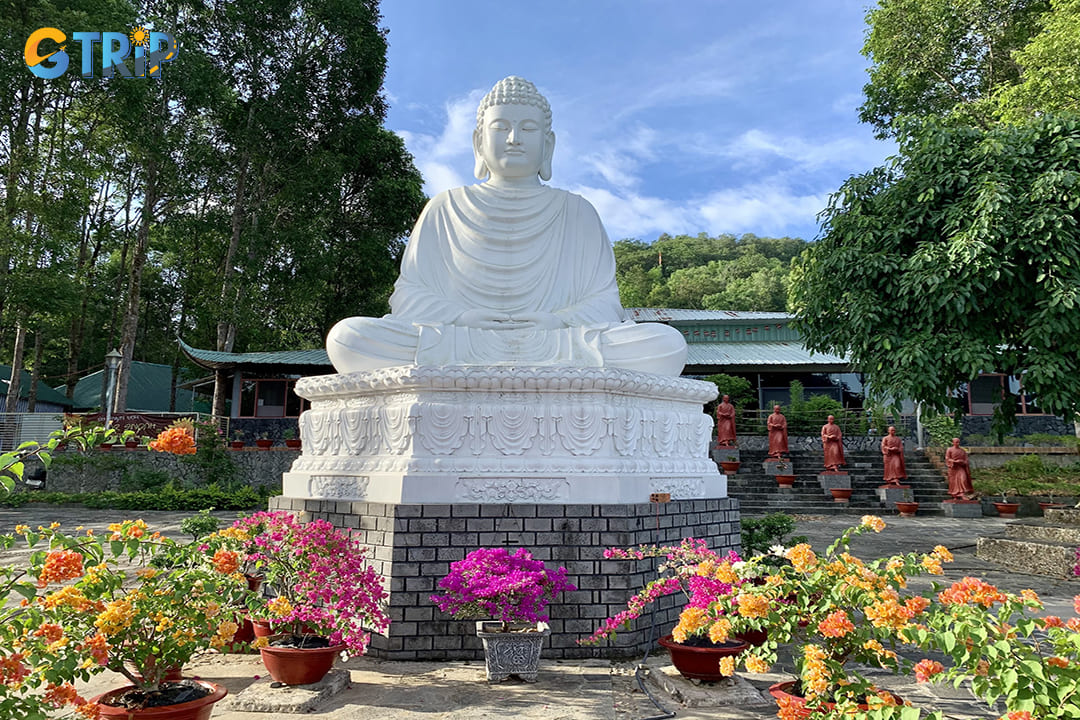
Phap Son Vipassana Centre is a place of spiritual retreat that blends seamlessly with the Vietnam rainforest ecosystem
Nam Cat Tien Rice Fields
Beyond the dense jungle of Cat Tien National Park, the Nam Cat Tien rice fields showcase the agricultural heritage of the region. These expansive paddies, cultivated by local farmers, provide insight into traditional Vietnamese rice farming techniques that have been passed down for generations.
The best time to visit is from May to July and September to November. From May to July, the fields are lush and green, with young rice plants growing under the warm sun. By September to November, the fields turn golden as the rice ripens, creating stunning landscapes perfect for photography. Travelers visiting in these months can witness farmers using age-old methods, such as plowing with water buffalo, and even participate in hands-on experiences.
These rice fields also serve as feeding grounds for various bird species, making them an unexpected yet rewarding spot for birdwatching. Early mornings, around 6:00 AM - 8:00 AM, or late afternoons, from 4:00 PM - 6:00 PM, are the best times to explore, as the soft sunlight enhances the scenery while keeping the heat manageable.
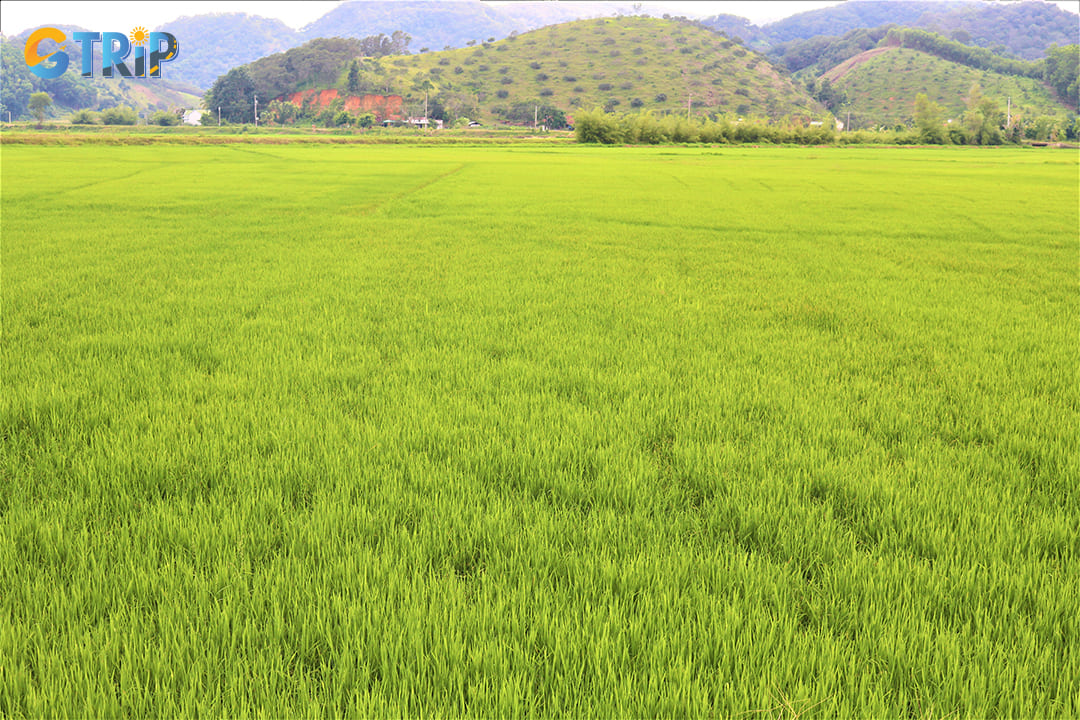
From May to July, the fields are lush and green, with young rice plants growing under the warm sun
Frequently Asked Questions (FAQs)
1. Can I rent a bicycle inside Cat Tien National Park?
Yes, bicycle rental is available at the park’s entrance, and some eco-lodges. Renting a bicycle is a great way to explore the park at your own pace. Rental cost: Around 100,000 - 150,000 VND per day. Popular cycling routes: Botanical Garden Trail is an easy ride through the lush jungle. Crocodile Lake Trail is a challenging but rewarding route for experienced cyclists.
2. Are there ATMs or banks near Cat Tien National Park?
There are no ATMs or banks inside the park. The nearest ATM is in Tan Phu Town, about 15 km away. It’s best to bring enough cash before arriving, as most local accommodations and restaurants only accept cash payments.
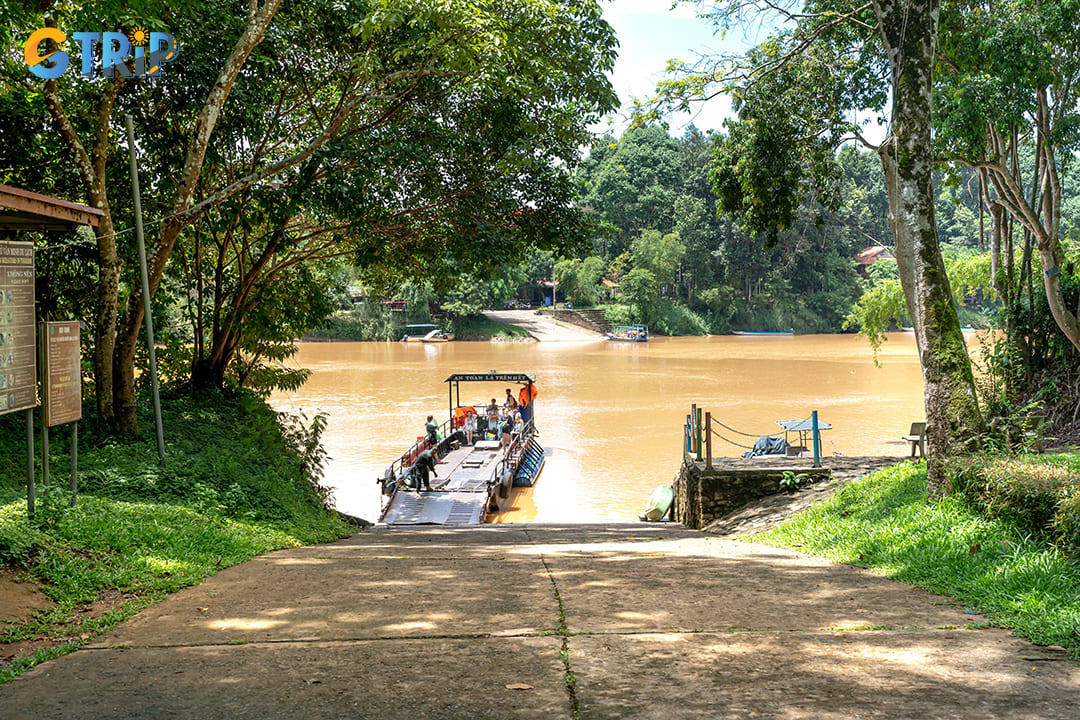
It’s best to bring enough cash before arriving at Cat Tien Park
Cat Tien National Park offers a dynamic mix of biodiversity, adventure, and cultural experiences. Birdwatchers can explore the park’s diverse ecosystem, while the Night Safari Tour unveils nocturnal species in their natural habitat. To make the most of the journey, you should plan your trip during the ideal season, respect conservation efforts, and come prepared for the tropical climate. For those looking to expand their adventure beyond the park, exploring other natural and cultural sites in Dong Nai can offer deeper insights into Vietnam’s landscapes. Check out Dong Nai tours by GTrip - Vietnam Travel Agency for curated experiences that showcase the best of the region.

